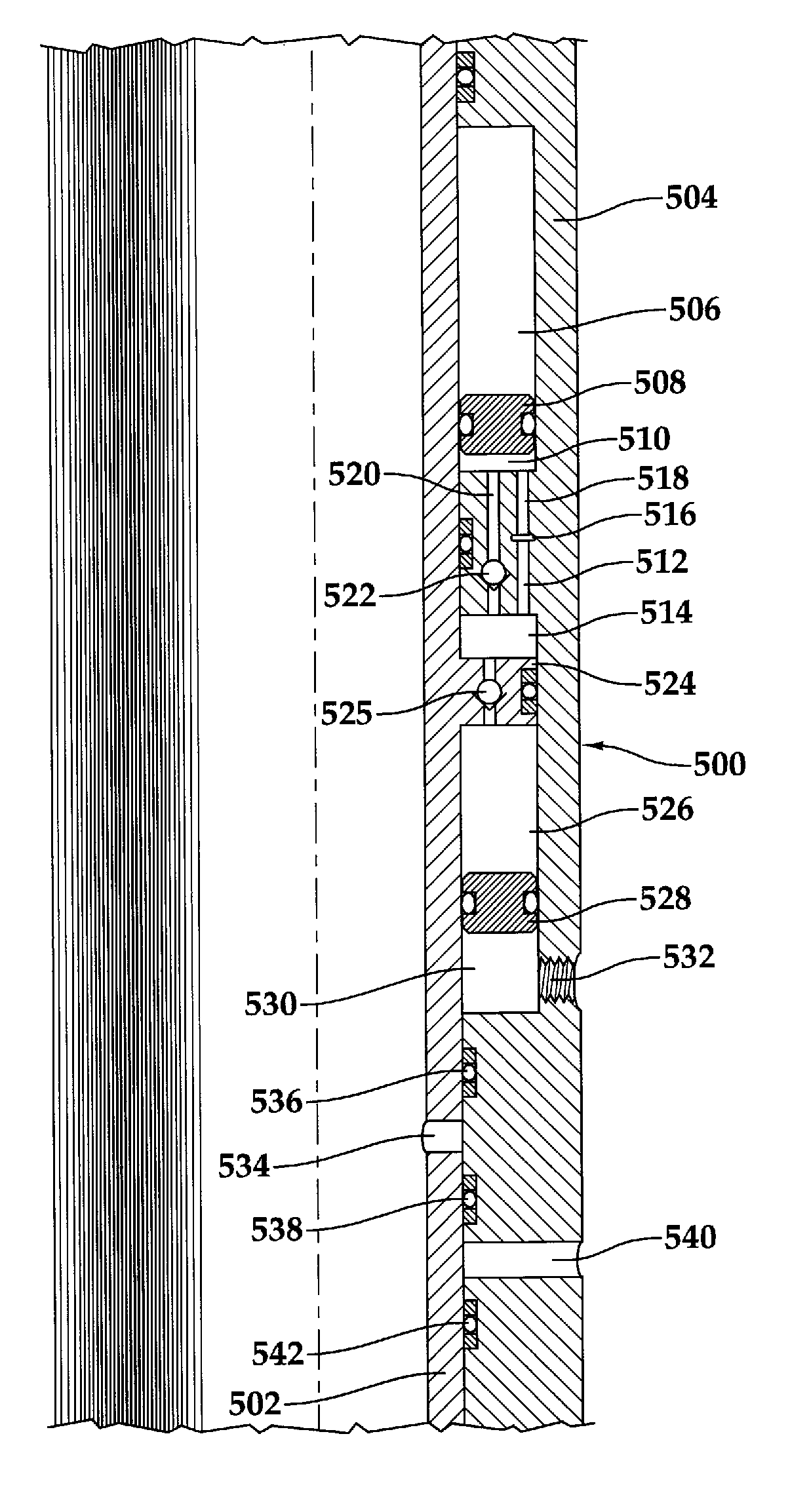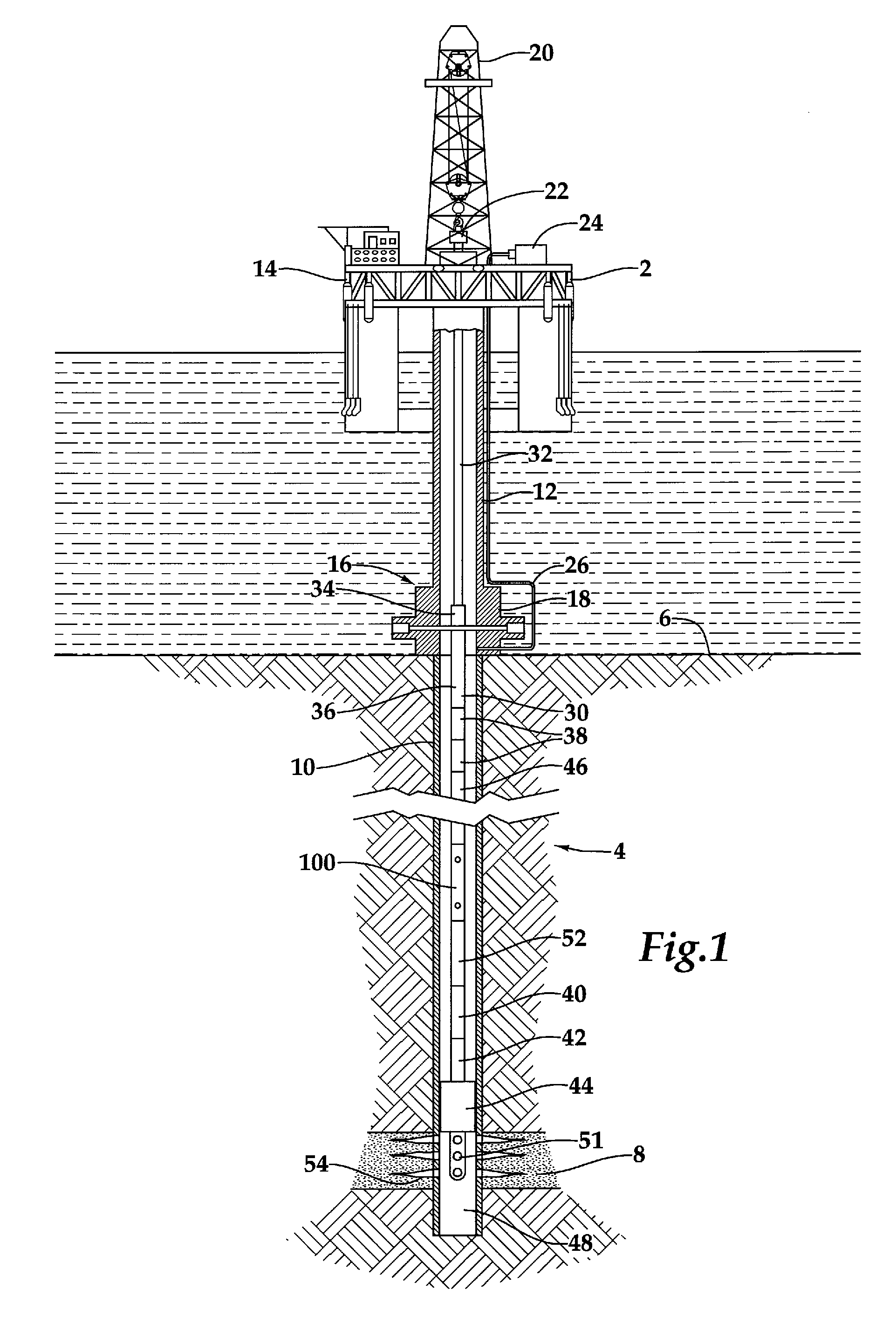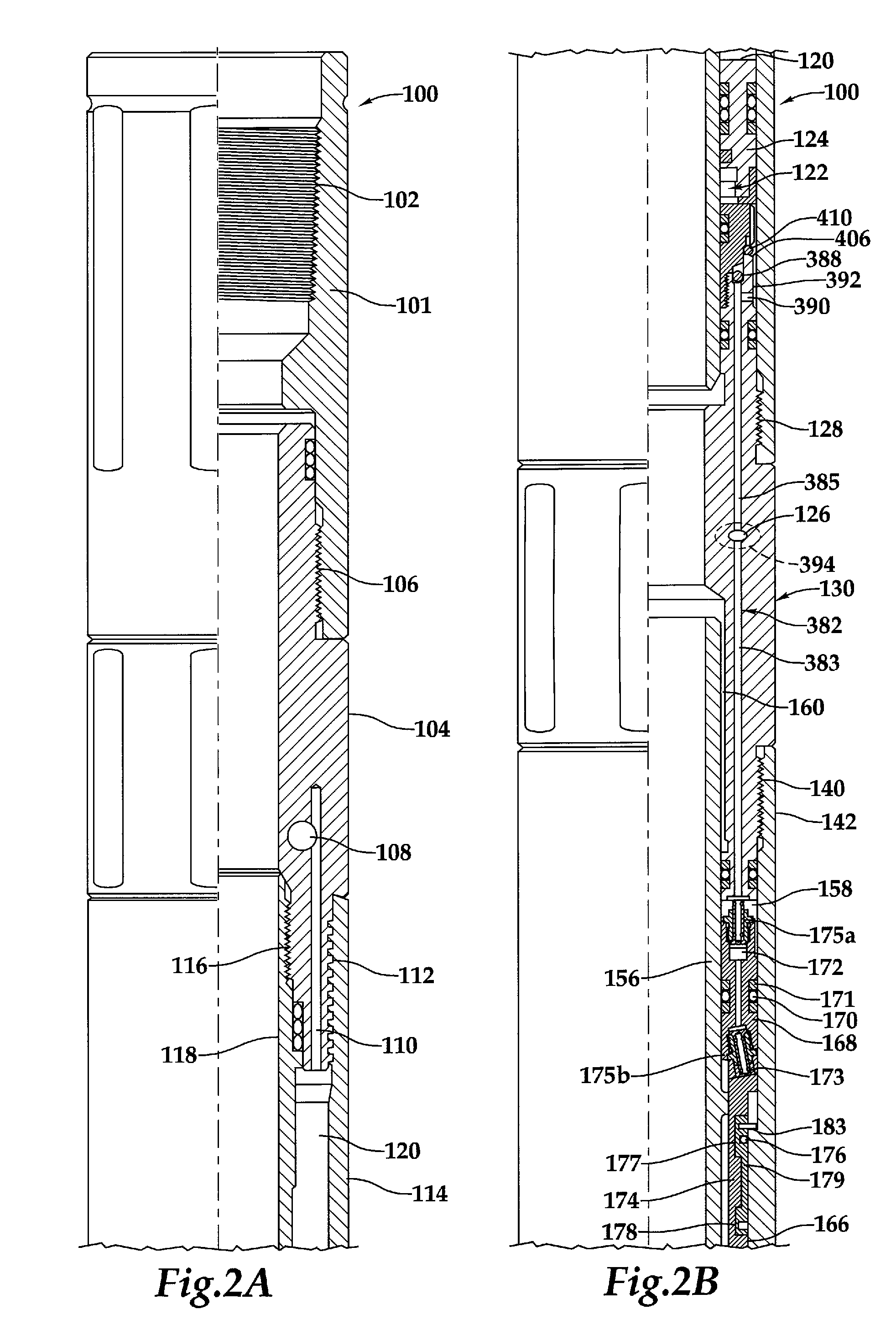Hydraulic lockout device for pressure controlled well tools
a well tool and hydraulic lockout technology, applied in the direction of fluid removal, borehole/well accessories, construction, etc., can solve the problems of requiring a higher release and operating pressure for the second-operated tool, and being undesirable to apply the degree of pressur
- Summary
- Abstract
- Description
- Claims
- Application Information
AI Technical Summary
Benefits of technology
Problems solved by technology
Method used
Image
Examples
Embodiment Construction
[0023]While the making and using of various embodiments of the present invention are discussed in detail below, it should be appreciated that the present invention provides many applicable inventive concepts, which can be embodied in a wide variety of specific contexts. The specific embodiments discussed herein are merely illustrative of specific ways to make and use the invention, and do not delimit the scope of the invention.
[0024]Referring now to the drawings in more detail, and particularly to FIG. 1, therein is depicted an exemplary multi-mode testing tool 100 operable in accordance with the methods and apparatus of the present invention, in an exemplary operating environment, disposed adjacent a potential producing formation in an offshore location. In the depicted exemplary operating environment, an offshore platform 2 is shown positioned over submerged oil or gas wellbore 4 located in the sea floor 6, with wellbore 4 penetrating a potential producing formation 8. Wellbore 4 ...
PUM
 Login to View More
Login to View More Abstract
Description
Claims
Application Information
 Login to View More
Login to View More - R&D
- Intellectual Property
- Life Sciences
- Materials
- Tech Scout
- Unparalleled Data Quality
- Higher Quality Content
- 60% Fewer Hallucinations
Browse by: Latest US Patents, China's latest patents, Technical Efficacy Thesaurus, Application Domain, Technology Topic, Popular Technical Reports.
© 2025 PatSnap. All rights reserved.Legal|Privacy policy|Modern Slavery Act Transparency Statement|Sitemap|About US| Contact US: help@patsnap.com



